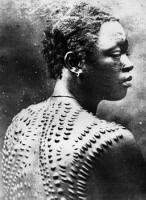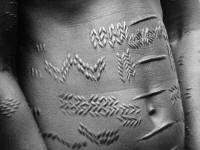There are few things in life every human being on this planet has in common – we are all born, we all live and we all die. We all have emotions, a brain, a heart, lungs to breathe in the good and out the bad. We have senses – perhaps not all of them, but we can all experience some form of them. We would all die without water, nutrition and sunlight. This is not debatable but fact. But what about the other stuff? The not so scientific stuff that we all share in between all this breathing and heart beating and thinking. What about living?
It is true that in between birth and death we experience something. It is also true that this something is different for every single human being and that there lies endless reasons and factors which could change this experience. But the impact that these actions have is one thing we all have in common. There are few people in the world who would never have had a negative experience. An emotional blip. A physical manifestation. Whether this is through our emotional memory or our own skin, this negativity seems to stay as a lasting reminder. Our once perfect self becomes damaged and changed forever. In rare cases, they fade and disappear. But in many forms, they stay. My aim within this show was to give this negativity a voice. And show the world that scars, however big or small, are unique, beautiful and miraculous.
I will easily admit that this show would not exist without its audience. That is not so much in the sense of someone to watch its message, but someone to provide it. There is little power in one voice, but there is great power with many voices. And this is exactly what we harnessed. In a style based upon verbatim, we collected over 40 scar stories from those willing to share. Our initial intentions was to take the bare essentials of these stories – the location of the scar and a small sentence as to its existence – to create our piece. Instead what we discovered was the beauty of language. Each scar story collected was written by its host and this provided us with individual and unique language that seemed too good to disregard. Some stories were said with pride from wounds and incidents which had greatly affected the individual, whilst others were not so willing (in this case, a simple nudge was needed.) What this proved was the delicacy in which the show was to be constructed. From an ethical perspective, it could not cause offence to those who shared with us. Nor could it cause judgement from the audience or the individual themselves, who may have regretted sharing if this were to be the case. From a creative perspective, the script needed to show the honesty behind each story and echo its true essence. Our unique voices must not become lost in the crowd. Not only this, but those who provided the stories should also be granted special thanks. An emotional reward perhaps, for those who shared would then have the experience of seeing their story played out on a stage as well as the audiences response to it. In one specific case, a woman whose scar caused her embarrassment gained a sense of acceptance after seeing it present in the piece. Through the simple power of giving a voice to her experience, she was able to change her perspective. Flick the switch from bad to good. No matter how many stories we collect and present, there will always be examples of this. Theatre should be an experience, audiences should not be watchful robots bound by expected etiquette and restraint. Instead they should be equal contributors, admirers and participants. What this show achieved was an embodiment of this ethos with its audience free to share and communicate their scars at the end of the show, marking it physically on an image for all to see. This contribution not only allowed for an after show discussion which could last longer than the performance itself, but also material for future shows. More scars to share. More stories to create and more voices to tell. And by doing so, more flicked switches. Not only did our audience build the show, but they will continue to give it an endless lasting presence and power.
As for my own learning, there is simply not enough words. This show has brought me back to my own heart and what I truly feel performance should be. It should have a message behind it, an essence of truth even if the material is nothing more than fiction. I place myself at the Stanislavskian end of the acting spectrum as I only ever aim to present truth to my audiences, through my own emotional manipulation as well as my instincts and gut reactions. Performing this piece allowed me to do so, creating characters from emotional language and techniques which meant truth was always at the core. What we both discovered, through sheer accident, was a formula for creating our own style of verbatim which was extremely successful. Finding a subject, sharing the role of collecting raw material, identifying themes in order to bundle this material together, editing and manipulation to keep the essence of individual language and an instinctive rehearsal process. When combined, the result was an organised script, solid choreographed movement and a strong, clear message. Through this formula, I also learnt that there must always be a balance between the visual and dialogue. Too many words spoil the creative broth, as does an overload of visual images without coherence or emphasis. By having two people speaking over 40 separate stories it can be easy to become lost in either of these aspects. However, our choice of synchronised and stylised minimal movement and physicality allowed our words to have their emphasis. The space was also minimal, with one block of light showing the distinction between audience and performer and four chairs as our set. Instead of seeming unfinished this aided in allowing a flow between style, image and language. It is something I have never attempted or successfully achieved, but has now become something I wish to keep within our trademark. Although this paragraph of reflection does the show some justice, I feel the best way to truly express what I have learnt is through a list (much in the style of Gomez – Pena) of my own advice to both my future creative self and you, a fellow creator.
- Don’t be precious – there will always be ideas but not all belong in a single show. Don’t be afraid to scrap them. What you can’t get in this one will simply fuel the next.
- Always encourage your audience to break their boundaries for they hold creative power.
- Reward them too. They are the reason you are here.
- Make a change. Theatre must always have an impact upon those it draws in.
- Act the way your heart tells you too. If you don’t feel like a performance artist then don’t be one. There is nothing wrong with holding onto your own artistic beliefs if it allows you to be at your highest level of expression.
- In order to create with another, there must always be a level of mutual respect and encouragement. If the show is going a way you don’t like, find a middle ground. You aren’t always right.
- Research is everything. Those who came before you all stood where you are, use them for inspiration and guidance. It could mean you sidetrack mistakes.
- Find a suitable space which you can create in. Distracting rooms make for bad rehearsal spaces.
- Not everyone will understand your vision. But that’s okay.
- Practise what you preach. If you are asking for other’s experiences then contribute your own too. It’s only fair.
- Share everything. Refinement and perfection comes from opening up to others.
- There must always be a balance between image, language and movement. Maybe not equal, but they must counteract one another.
- If you stumble upon a formula that works, stick with it. It could become your trademark. But don’t ever let it hinder your creative flow. If it stops working, adapt.
- Plan plan plan plan. Lists are wonderful creations and mean that your run up to show week can be free of stress (to a certain degree of course!)
- Don’t be afraid to show your vulnerability. It is what makes you human.
Embody is truly one of my proudest achievements. It revived my inner actor as well as my own morals and beliefs of why theatre exists, which to me is simply this – take something small, bring it to life and let it breathe on stage, for its aftermath could be gloriously rewarding.


















